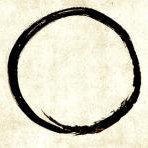-
Posts
380 -
Joined
-
Last visited
-
Days Won
1
FlorianB last won the day on December 6 2024
FlorianB had the most liked content!
The recent visitors block is disabled and is not being shown to other users.

FlorianB replied to Iaido dude's topic in Tosogu

FlorianB replied to Iaido dude's topic in Tosogu



FlorianB replied to Michael 101's topic in Tosogu

FlorianB replied to Iaido dude's topic in Tosogu

